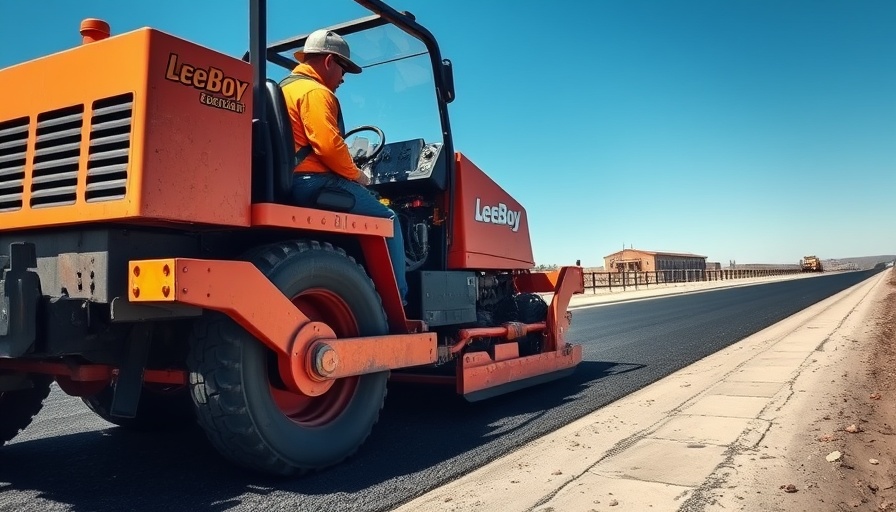
Fayat Group's Strategic Move in the Construction Equipment Sector
In a notable shift within the construction equipment landscape, French manufacturer Fayat Group has announced plans to acquire LeeBoy from Singapore Technologies Engineering for approximately $290 million. This deal marks Fayat's second acquisition this year, indicating a robust strategy to strengthen its holdings in the competitive construction market. Fayat is already the parent company of well-known brands such as BOMAG and Dynapac, further bolstering its position globally.
Understanding LeeBoy’s Market Position
LeeBoy has established itself as a significant player in the construction equipment industry, specializing in a diverse range of machinery like asphalt pavers, motor graders, and compactors. Valued at $157 million as of the end of 2024, the company brings substantial revenue to Fayat, with $255 million reported in 2024, and earnings of approximately $29 million before tax. This acquisition not only adds to Fayat’s portfolio but also provides an avenue for further innovation in machinery and technology.
Growth Through Synergy: The Future of LeeBoy Under Fayat Group
Incorporating LeeBoy into Fayat’s umbrella aligns with their recent acquisition of the Mecalac Group. This strategic move suggests a commitment to leverage synergies across their brands for enhancing distribution channels and collaborating on technology developments. Unlike many acquisitions that absorb companies into a singular entity, Fayat has indicated that LeeBoy will maintain its operational autonomy, fostering a culture of innovation while benefiting from Fayat's broader resources.
A Potential Shift in Industry Dynamics
The acquisition of LeeBoy presents notable implications for the construction industry at large. With its extensive dealer network across North America and ongoing product development, including the return to the compaction market with new soil and asphalt rollers, LeeBoy is positioned to enhance Fayat's competitiveness. Furthermore, the anticipated collaboration across Fayat's various brands promises to yield advancements in equipment technology, potentially setting new standards in construction machinery.
Key Takeaways for Construction Businesses
For business owners, property developers, and facility managers, the implications of this acquisition are profound. It signals the emergence of a more unified and technologically advanced equipment provider landscape. As Fayat integrates LeeBoy’s capabilities, stakeholders can expect an innovative approach to construction solutions that align with the growing emphasis on sustainability and efficiency.
Understanding these developments can help informed decision-makers align their strategies with emerging trends in construction technology and procurement practices. The integration of different brands under Fayat is likely to push for better equipment, potentially leading to lower costs and enhanced productivity.
As the construction landscape evolves, it’s crucial for industry professionals to remain informed and adaptable, leveraging these advancements to optimize their operations and stay competitive.
For those eager to explore more about how these market shifts will impact construction practices, now is the time to engage in discussions and consider how such advances could advance your own projects and investments. Capitalizing on emerging technologies and understanding the market dynamics will be key to paving the way for successful endeavors in the years to come.
 Add Row
Add Row  Add
Add 




Write A Comment